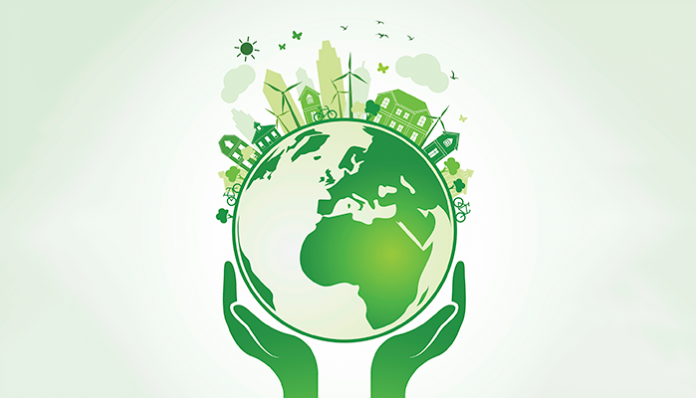This article is written by Vanya Verma pursuing B.B.A. LL.B (Hons.) from Alliance University, Bangalore. This article talks about the responsibilities of developed and developing countries towards environmental protection. This article also covers the principle of Common But Differentiated Responsibilities (CBDR) along with the impact of Covid-19 on the environment.
Table of Contents
Introduction
Globally the United Nations recognises that the developed countries are more responsible for preserving the environment. The developed countries have been historically causing global warming and major developing countries such as China and India are adding to that stock.
The developed countries in order to preserve the environment should make an absolute and significant reduction in their carbon emissions, as emissions are the major cause of global warming. There is a difference between the emissions by developed countries and developing countries and cannot be treated at par as the developed countries emissions are of lifestyle nature while the emissions of developing countries are of survival nature.
Developing countries try to shift the burden to the developing countries instead of accepting their historical responsibility. The developed countries are of the view that “we got here first, so we get to keep what we have, while those who came later must stay where they are for the sake of saving the planet from the threat of climate change”.
The developed countries have been doing this by focussing upon the current emissions and ignoring the emission stock that has already been present in the atmosphere because of their activities. The developed countries have resources for advanced technologies to combat environmental pollution, the developing countries and the lower developed countries are ultimately the ones who have to face the consequences more.
Common But Differentiated Responsibilities (CBDR)
At the 1992 United Nations Conference on Environment and Development held at Rio de Janeiro, the principle of Common But Differentiated Responsibilities (CBDR) was formalized. Principle 7 of the Rio Declaration was enshrined as the concept of CBDR. It was stated in the declaration that, “In view of the different contributions to global environmental degradation, States have common but differentiated responsibilities. The developed countries acknowledge their responsibility that they bear in the international pursuit of sustainable development in view of the pressures that their societies place on the global environment and of technologies and financial resources they command.”
The 1992 United Nations conference was centred around key themes of the climate change that were- desertification, deforestation, biodiversity degradation, these were the main environmental problems which needed a collective response to be levelled up in a common responsibility. Legally the CBDR principle illustrates the obligation of the States for the protection of the environment and environmental resources.
The CBDR developed from the concept of ‘common heritage of mankind’ and in International law, it is a phenomenon of general principles of equity.
CBDR emerged as a compromise between the developed and developing countries. The 1992 conference discussed the need to establish different levels for different States according to their level of contribution and capacity so that they contribute collectively towards the environment protection. This idea was explicitly emphasised in the Stockholm Declaration (Report of The United Nations Conference On The Human Environment, Stockholm 5-16 June 1972).
It has been stated in the Stockholm Declaration that the policymakers must evaluate “the applicability of the standards that are reasonable for the most advanced countries but might be of unwarranted social cost and inappropriate for the developing countries”.
CBDR recognises a higher level of contribution by the developed countries towards the environmental degradation of resources such as air and water and categorises the responsibility accordingly. It demonstrates that the developed nations have been able to develop themselves for a very long time without being restricted by environmental rules and they should now take a greater share of responsibility as compared to the developing nations.
The CBDR principle takes into concern the technological and financial capabilities of the nations to fight against environmental problems. The principle basically refers that all the countries should give their best in the fight against environmental protection but the developed countries that are primarily accountable for climate change should comparatively share the burden more as compared to the developing nations and under-developed nations.
It is a principle in the United Nations Framework Convention on Climate Change (UNFCCC) that recognises though each country is responsible towards environmental protection but takes into account each countries’ capabilities and responsibilities differently while dealing with climate change. The ultimate objective of UNFCCC is to achieve the stabilisation of the concentration of greenhouse gas in the atmosphere to a level that would prevent dangerous interference with the climate system.
It has been stated in the UNFCCC that the countries should act to protect the climate system “on the basis of equality and in accordance with their common but differentiated responsibilities and respective capabilities.”
Applications of the principle of CBDR
The CBDR principle has at least two consequences practically. Firstly, it authorises or may compel all the concerned States to take part in international response measures that aim at addressing environmental problems. Second, it directs to environmental standards that impose differing obligations on States. The CBDR principle finds its roots prior to the United Nations Conference on Environment and Development (UNCED) and is favoured by the state practice at the global and regional levels. Common responsibility interprets the shared obligations of two or more States towards the protection of a particular environmental resource.
The principle of CBDR has been embodied in the following existing policies:
Environment
The 1997 Kyoto Protocol made a distinction between developed and developing countries and said that “developed countries are required to reduce their emissions while developing countries are only needed to report their emissions”. This distinction shifts the responsibility and burden to the developed countries.
The government of developed countries under the binding agreement of the CBDR principle were required to reduce their emission of greenhouse gases (GHG) in compliance with the pre-agreed targets. These developed countries fall under the category of Annex 1 in the Kyoto Protocol To The United Nations Framework Convention On Climate Change.
The greatest impacts of climate change are felt by developing countries whilst the greatest per capita GHG emissions are concentrated in developed countries. So, the principle says that if developed countries have contributed higher rates of GHG emissions and they have the capacity to reduce their emissions then the developed countries should take the greatest burden on the climate change mitigation performance. This was the goal that had been set under the Kyoto Protocol.
To minimize the effect of climate change, at least the following should be done:
- Decrease environmental pollution by CO2.
- Decrease the use of energy sources derived from gas and oil.
- Increase the use of alternative energy sources such as geothermal, wind and solar energy.
- Make better use of fresh/drinking water from the earth, by efficiently managing available water in the lakes, rivers and underground deposits.
Eradication of extreme poverty
Eradication of poverty has been embodied under Millennium Development Goals (Goal 1). The principle of CBDR is applicable to the countries with the highest rate of poverty to focus upon eradicating poverty and concentrate on poverty as the most serious issue. While the countries with lower poverty rates (developed countries) can assist other countries to deal with their efforts on poverty eradication by focussing upon international partnerships, ensuring aid, transfer of technology.
The developing and lower developed countries argue that they have to work more in areas to eradicate poverty compared to the developed countries. The increased level of Official development assistance (ODA) is covered under paragraph 42 of the Monterrey Consensus On Financing For Development, which asserts that “developed countries that have not done so to make concrete efforts towards the target of 0.7% of Gross National Product (GNP) as Official Development Assistance (ODA) to the developing countries”.
Financing
The first clear responsibility of the developed countries as given under the Monterrey Consensus is “free access” that has been provided to the developed country markets for the exports of lower developed countries. Paragraph 22 of the Consensus calls for “appropriate institutions in the source nations to enhance their support for private foreign investment in the development of infrastructure and other areas of priority”. This paragraph ascertains that the developed countries are expected to accelerate the flow of private capital to the developing countries. Paragraph 15 of the Millennium Declaration also convenes to the industrialised countries to “implement the enhanced program of debt relief for the heavily indebted poor countries”. Thus, debt relief is a significant factor in the responsibilities of developed countries in the sector of finance development. With few exceptions of calls for the national trade policy reform, it is expected from developed countries to provide means so as to lessen the financial burdens on the developing countries while it is being expected from the developing countries to ascertain their own national financial sustainability for the country.
The principle of CBDR is not accepted unanimously among the developed nations. The principle was rejected by the United States (US) at the Rio negotiations. Since then the US has conditioned its participation in any restrictive proposal on a specific commitment from the developing nations to participate as well (1997 Byrd-Hagel Resolution). As a consequence of this lack of consensus, CBDR has been relatively sidelined in the debates over environmental governance.
Pollution is one of the many environmental challenges that are being faced by the world (though the pollution levels have gone down due to lockdown because of COVID-19 outbreak, the levels may rise soon once the lockdown opens). The impact of pollution in developing countries is more serious that leads to death, ill-health and disabilities of millions of people every year. The developed nations have enormous resources and technologies to tackle the problems related to pollution, consequently, making it comparatively easier for developed countries. Curtailing environmental pollution may undermine economic growth and competitiveness of developing nations whose economies depend mostly upon natural resources. So it can be expected from most of the developed countries that, as they have achieved significant development and economic growth and have the capacity to afford and focus on the environmental goals as their basic living necessities have been achieved.
At every level of development, countries are often compelled to make choices between conflicting goals. Developing countries strive to ensure economic growth and poverty reduction as well as energy for all at a competitive price. These factors have been related to the regions of high levels of income and non-income poverty regions. The countries opt for the goals of economic growth and development as well as cheap energy for all to develop and improve the standards of living of their citizens. This may lead to environmental degradation and pollution. It is necessary that there should be energy access at a lower price in order to make the industries in the developing nations competitive and contribute to the growth of the economy, job creation and development. This will increase the over-consumption of energy, enormous waste and inefficiency and also fuel environmental pollution.
The developing countries desire industrialization and economic growth and incline to consume more cheap energy. There is also a necessity for developing countries to construct roads and rail tracks and expand infrastructure to promote economic growth. Such activities that are required at the initial stage of development of the economy are substantially energy-intensive.
Effect of lockdown due to COVID-19 on environment
Though the lockdown has a negative impact on the economy of the nations as the level of global consumption, production and employment level have come to a halt, the result of global lockdown has helped in bringing down the level of greenhouse gas emissions and air pollution. Consequently, in the world’s major cities the air quality has improved drastically. The main reason behind this is the closure of factories and reduction in road traffic which were the main source of emission of carbon dioxide (CO2), nitrogen oxides (NOx) and related ozone (O3) formation, and particulate matter (PM).
The global air traffic dropped by 60%. These reductions in emissions taken together have led to a temporary drop of CO2 emissions. Thus, there is a hope that greenhouse gas emissions will be reduced substantially for the long term to avert climate change.
As long as the economic activities are curtailed due to the coronavirus crisis, the emissions will be relatively lower. But as soon as the economic activities will pick up their pace the emissions are most likely to rise to their previous level. To prevent the rise in pollutant emission level, the environmental campaigners are demanding that the bailout packages for the industrial manufacturers and transportation companies should incorporate provisions related to emission reduction in their future operations.
There is another side of this Covid-19 lockdown too, the consequences of the coronavirus crisis have not been fully positive on the environment. Though the world is healing, still the impact on waste remains a concern as non-recyclable waste has risen. Drastic fall in the export of fishery and agricultural products has led to generating large quantities of organic waste. There is a temporary halt on the maintenance and monitoring of the natural ecosystem. There is a rise in the problems of local waste as most of the municipalities have discontinued their recycling activities due to fear of propagation of coronavirus in the recycling centres.
Use of plastic has increased, food retailers have started resuming plastic bags. Due to this lockdown, many consumers have increased their consumption with single-use packaging plastic for the delivery of takeaway food. These activities have created a challenge for the waste management industry due to the lockdown because of Covid-19 when they are operating in a limited capacity.
The coronavirus pandemic has led to an increase in the volume of un-shippable agricultural and fishery commodities due to a rise in import and export restrictions and a decline in the availability of the service of cargo transportation.
Levels of organic waste have risen abruptly as many export-oriented producers have produced volumes far too large to be absorbed in local markets. There are chances that the methane (CH4) emissions may rise if this waste is left to decay.
As the export of the agricultural and fisheries products have fallen, production levels have plunged, resulting in unemployment levels in both categories to increase substantially.
In these sectors generally, the post-harvest processing labourers are women supporting households, this has created extreme hardships, particularly for the women with low-income in developing nations where social safety nets are not in place.
Conclusion
The developing countries in their quest for economic development and poverty reduction are expected to put economic growth, energy for all and industrialization at the forefront of their goals before giving consideration to environmental issues. Therefore, compelling developing countries like those in Sub-Saharan Africa and South Asia to pursue environmental goals, particularly reduction in CO2 emissions, will require substantial economic, technological and financial support from developed countries and the international community to compensate for the economic losses associated with reducing pollution.
References
- https://www.theguardian.com/environment/2015/nov/23/paris-climate-talks-developed-countries-must-do-more-than-reduce-emissions
- https://www.civilsdaily.com/news/common-but-differentiated-responsibilities-and-respective-capability-cbdr-rc/
- https://breakingenergy.com/2014/09/23/environmental-pollution-is-inevitable-in-developing-countries/
LawSikho has created a telegram group for exchanging legal knowledge, referrals and various opportunities. You can click on this link and join:
 Serato DJ Crack 2025Serato DJ PRO Crack
Serato DJ Crack 2025Serato DJ PRO Crack











 Allow notifications
Allow notifications



